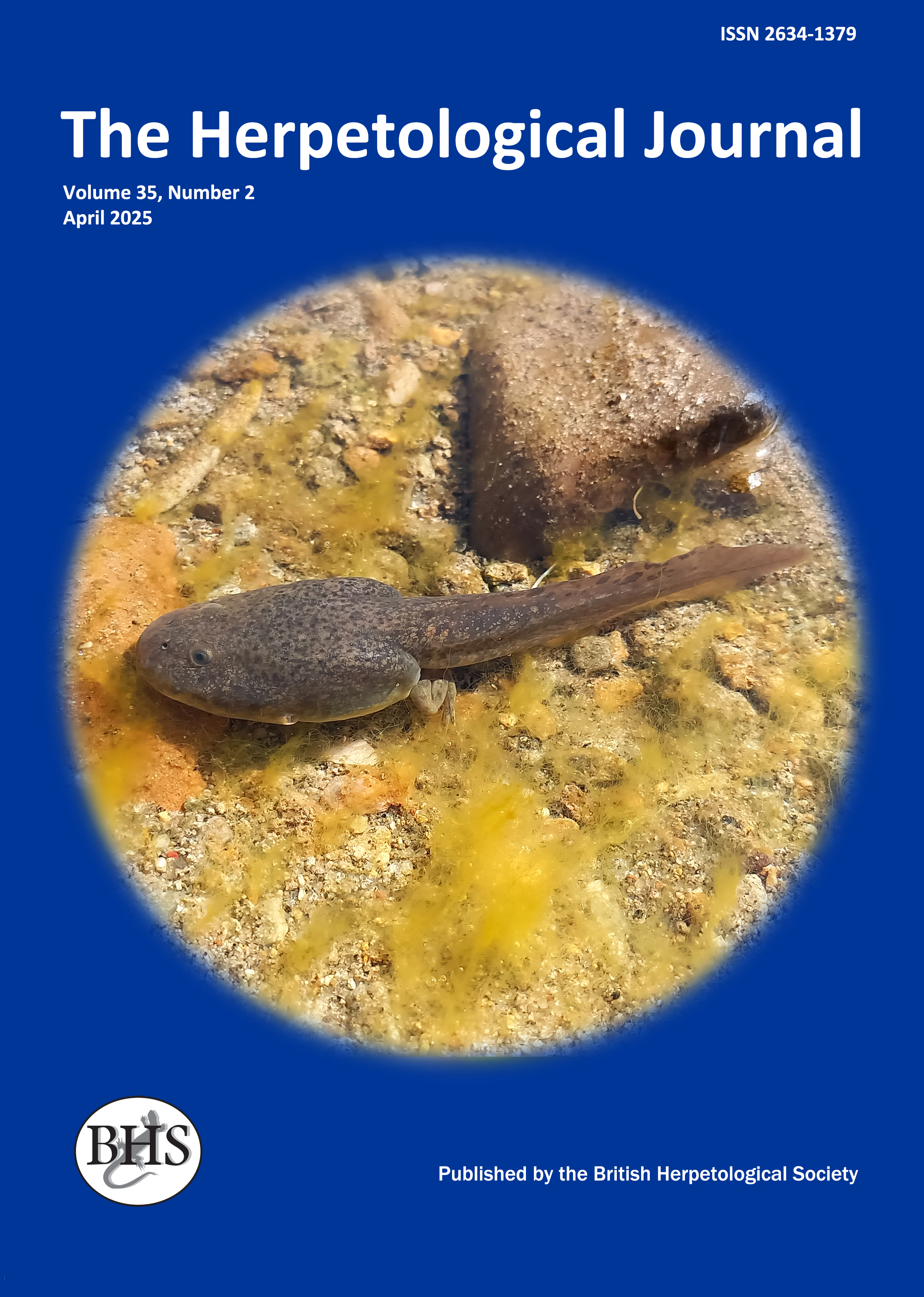
The Herpetological Journal
The Herpetological Journal is the Society's prestigious quarterly scientific journal. Articles are listed in Biological Abstracts, Current Awareness in Biological Sciences,Current Contents, Science Citation Index, and Zoological Record.
ISSN 0268-0130
2021 Impact Factor from Clarivate for the Herpetological Journal is 1.194, an increase of 0.332 from 2020.
pdf 07.A review of torrent frogs (Amolops: Ranidae) from Bhutan, the description of a new species, and reassessment of the taxonomic validity of some A. viridimaculatus group species aided by archival DNA sequences of century-old type specimens
1753 downloads
Open Access
DOI: https://doi.org/10.33256/32.3.142175
pp: 142-175
Authors: Stephen Mahony, Tshering Nidup, Jeffrey W. Streicher, Emma C. Teeling & Rachunliu G. Kamei
Abstract: Seven species of the Asian torrent frogs (genus Amolops) have previously been reported from the eastern Himalayan country of Bhutan. Species identifications from the region have been largely based on photographed animals with few voucher specimens available and no molecular sampling. Understanding the taxonomic status of Bhutan’s torrent frogs has also been hampered by the poorly understood distributional limits of species from surrounding regions. Herein we utilised molecular phylogenetic and morphological data for vouchered specimens from Bhutan and provide a complete literature review of all Amolops populations reported from the country. Phylogenetic relationships were estimated by combining available sequence data (from GenBank) with newly generated sequences from recently collected Bhutanese Amolops populations. We also obtained archival DNA sequences from the type specimens of Amolops formosus, A. himalayanus, and A. kaulbacki, collected between 82 and 151 years ago. Our comparative analyses revealed a large, new (to science) species of the Amolops viridimaculatus group from eastern Bhutan. Morphological examinations of related taxa revealed that A. senchalensis from India is not a synonym of A. marmoratus. Molecular phylogenetic results supplemented by morphological data unambiguously demonstrate i) that A. himalayanus is present in eastern Nepal, ii) the presence of a previously undocumented population of A. nepalicus in eastern Nepal, iii) a 200 km range extention for A. kaulbacki into Yunnan, China, iv) that A. gyirongensis should be considered a junior subjective synonym of A. formosus, and v) that A. splendissimus from Vietnam should be considered a junior subjective synonym of A. viridimaculatus. Based on our results, we expand the Amolops viridimaculatus group to include nine species, including A. formosus, A. himalayanus, A. kaulbacki, and the new species described herein. We provisionally include a further three species in the viridimaculatus group based on morphology, A. longimanus, A. nidorbellus, and A. senchalensis. Combining our data with the literature review allowed us to identify several unidentified Amolops species from recent phylogenetic studies and remove nine frog species (including Hyla, Sylvirana, and seven Amolops species) from Bhutan’s amphibian checklist. We recognise four species of Amolops in Bhutan, three of which cannot be confidently identified to the species level based on currently available data.
Keywords: Anura, taxonomy, Himalayas, conservation, vouchered-specimens

